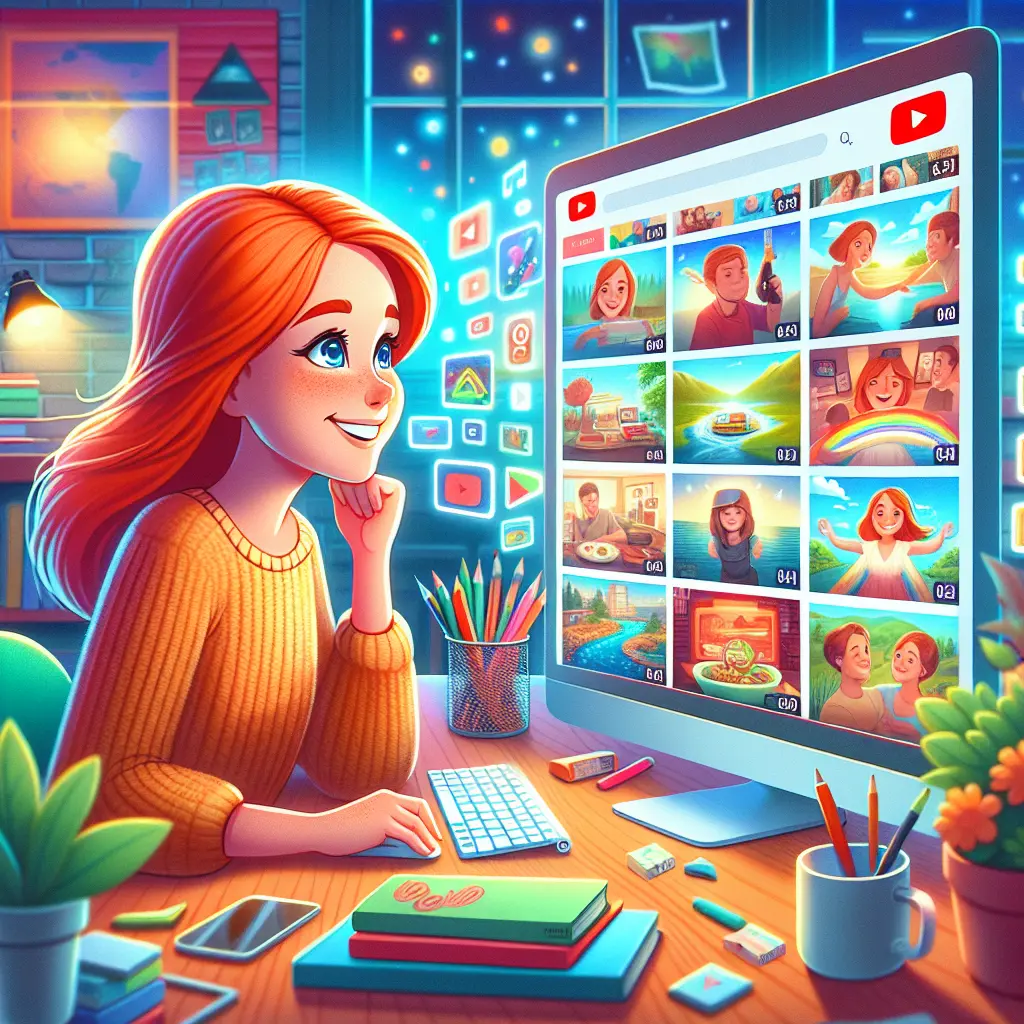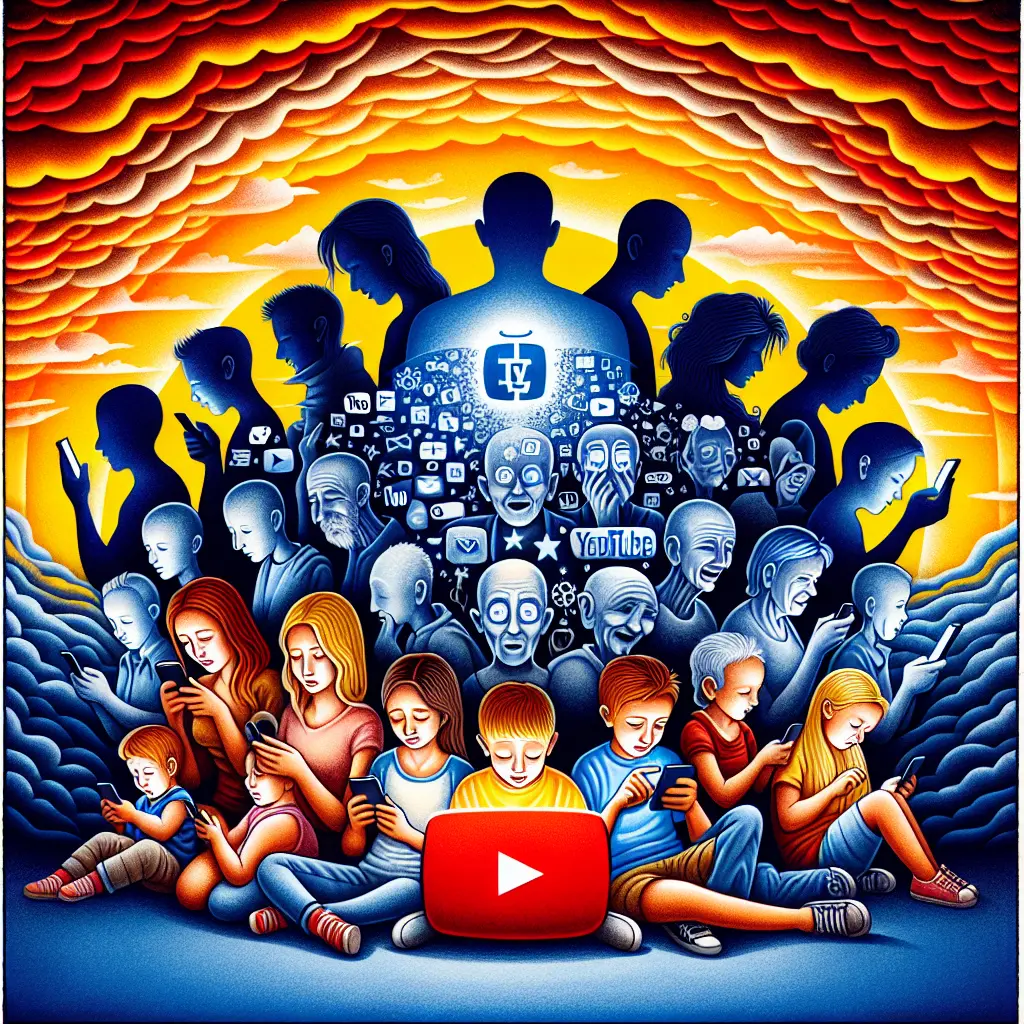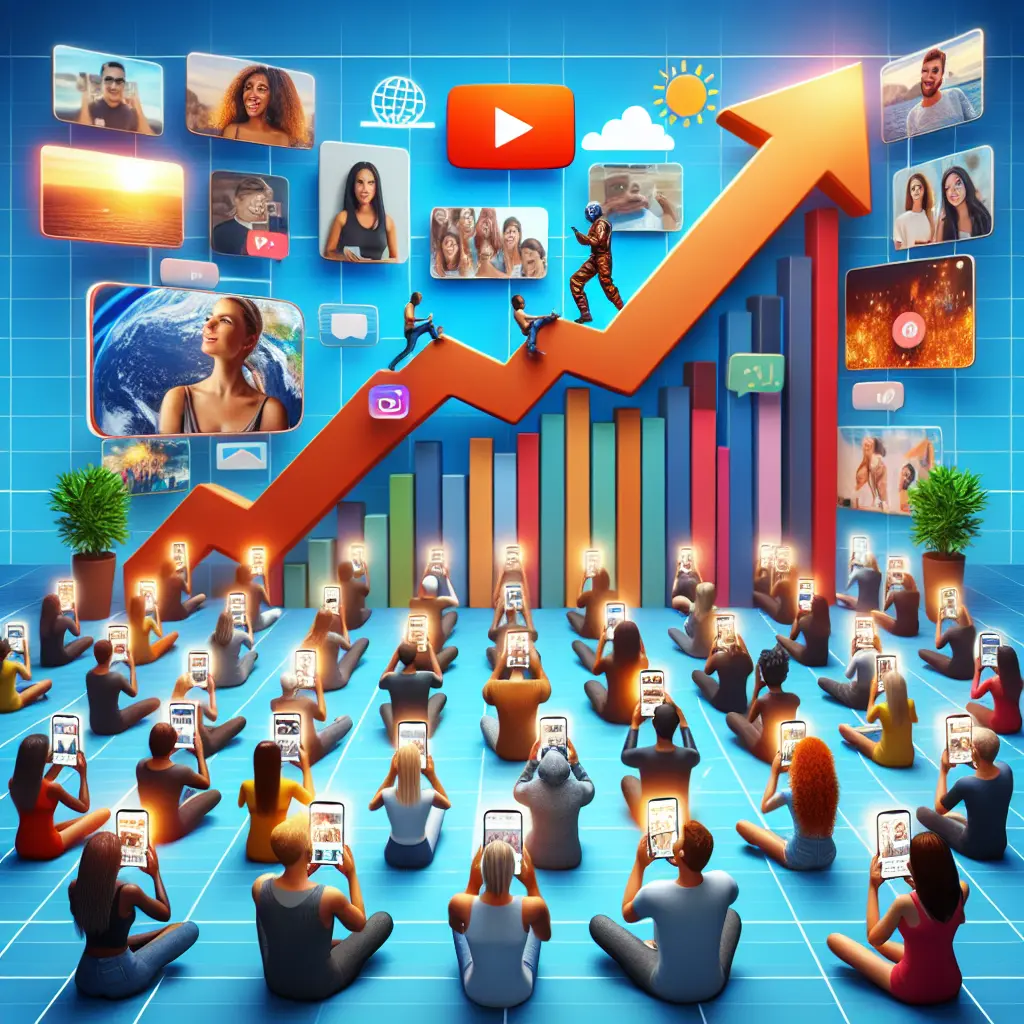In today's digital landscape, YouTube has evolved from a mere video sharing platform to a significant part of our daily lives. Its influence spans across various age groups, affecting everyone from young children to the elderly. This blog post delves into the psychological effects of YouTube consumption, examining how it impacts different age demographics and its broader implications on mental health and social behavior.
YouTube consumption involves more than just the number of hours spent watching videos. It includes the types of content viewed and the interactive behavior associated with its use, such as commenting and sharing. According to recent studies, average screen time has dramatically increased, with YouTube being a major contributor. This rise in digital media consumption has prompted researchers to explore the psychological effects and behavioral changes associated with prolonged use of the platform.
The Impact on Various Age Groups
Children and Online Video Impact: For children, YouTube has become a popular source of entertainment and education. However, the online video impact on children can be profound. Excessive screen time has been linked to reduced attention spans, disrupted sleep patterns, and developmental delays. Furthermore, content not specifically tailored for children can expose them to inappropriate material, despite parental controls and YouTube’s policies (Source: American Academy of Pediatrics).
Teenagers and YouTube Usage: Teenagers form one of the largest demographics of YouTube users. Their consumption behavior often includes following influencers and engaging with content that shapes their perceptions and social behaviors. While YouTube can be a source of information and inspiration, there is a growing concern about its role in reinforcing stereotypes and unrealistic expectations. Moreover, the pressure to gain likes and followers can lead to anxiety and depression, highlighting significant mental health implications (Source: Journal of Adolescent Health).
Elderly and Digital Media: The elderly demographic is increasingly engaging with digital media, including YouTube. This platform can offer cognitive stimulation and a social connection that is crucial for this age group. However, the elderly are also susceptible to misinformation and scams prevalent on social platforms. Therefore, while there are benefits, there is a need for awareness and education to navigate the digital world safely (Source: Gerontology International).
Analyzing YouTube Viewing Behavior
YouTube viewing behavior varies significantly across different age groups. Young adults might binge-watch video tutorials or series, whereas older adults may prefer news outlets or channels that feature hobby-related content. Understanding these patterns helps in assessing the broader digital media influence on society.
The correlation between mental health and YouTube is complex. While there are benefits like learning and social connection, excessive consumption can lead to issues like YouTube addiction. This addiction can manifest as an obsessive need to watch videos, leading to neglect of other life aspects such as physical health, social relationships, and responsibilities (Source: Psychology Today).
Social media consumption, including YouTube, affects our emotional and psychological well-being. The constant barrage of content can lead to emotional overload, reducing our ability to process feelings effectively. Moreover, comparison with idealized versions of reality on screen can exacerbate feelings of inadequacy or low self-esteem (Source: Social Science Computer Review).
The link between screen time and psychology is increasingly scrutinized. High screen time has been associated with mood disorders, cognitive impairments, and other psychological issues. Balancing screen time with offline activities is crucial for maintaining psychological health (Source: BMC Public Health).
Media Consumption Habits
Our media consumption habits have evolved with the advent of platforms like YouTube. Binge-watching has become common, influencing our sleep patterns and overall lifestyle. These habits are crucial indicators of our health and social behavior, necessitating a balanced approach to media engagement (Source: Harvard Health Publishing).
Addressing YouTube addiction involves recognizing the symptoms and taking practical steps towards moderation. Setting time limits, curating content consumption, and engaging in offline activities can help mitigate its effects (Source: Addiction Center).
Finally, the emotional impact of YouTube can be both positive and negative. On one side, it allows for emotional expression and community building. On the other, it can cause emotional distress or detachment from reality due to unregulated consumption (Source: Cyberpsychology Journal).
In conclusion, while YouTube is a powerful platform that offers numerous benefits across different age groups, it also poses significant psychological challenges. From affecting children’s developmental processes to influencing teenagers' social perceptions and impacting the mental health of adults, YouTube’s role in our lives is profound and multifaceted. As we continue to integrate digital media into our daily routines, it is essential to foster awareness about its effects to utilize these tools in healthy and productive ways.
Thank you for joining me on this exploration of the psychological effects of YouTube across different demographics. As we navigate this digital era, let us strive for balance and mindfulness in our media consumption habits.










Leave a Comment